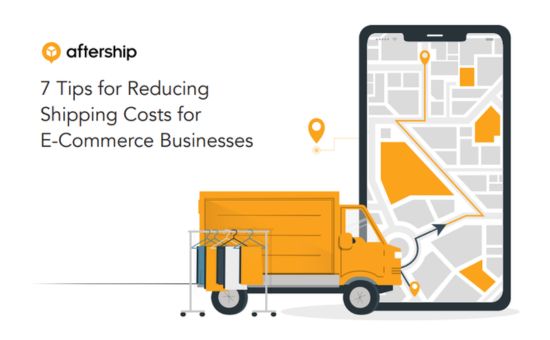Seize the Headless Opportunity | BigCommerce
E-Commerce & Retail
INTRO: What exactly is headless commerce and why do we need it?
In an age of uncertainty with rapidly evolving markets, shifting consumer habits, and an increasing number of channels, businesses need to be incredibly agile. They require a new ecommerce architecture that is nimble, scalable and reflects the complexity of the 21st-century shopping experience. This is where headless commerce, also known as composable commerce, comes in.
Headless commerce separates the customer-facing head—the storefront—from the back-end solutions body, such as product and order management systems. Traditional ecommerce architecture ties both systems together, but this approach is becoming less suitable given the myriad of new touchpoints and technologies.
Today, customers expect to interact with a brand on the channel and device of their choice. Meeting customers where, how, and when they want to shop is crucial. Whether using apps, mobile stores, wearable devices, websites, or social selling sites, consumers don’t want to be restricted in their product discoveries and content consumption. The digital environment needs to reflect this flexibility.
Given the range of possibilities, a more accurate term might be many-headed commerce—a Swiss army knife of customer-facing tools supported by a single commerce platform on the back end.
There is a lot of hype around headless commerce, but also some misunderstandings. While it is a growing concept within the industry and its benefits are well-known, it hasn’t been universally adopted. Is it worth investing in right now? It’s not for everyone—there is no one-size-fits-all solution, and there are challenges to consider.
What is clear is that brands still operating with monolithic systems are being forced to re-examine how they engage customers, shifting towards a more flexible, agile, and innovative approach.
What can headless achieve?
Agility
With the front-end independent, you can quickly create new experiences via mobile apps, chatbots, VR, or IoT devices without altering the back-end. If all your customers suddenly flock to TikTok, you need to be there too. The front end in headless commerce can achieve this rapidly.
Scalability
Once decoupled, the customer experience can scale independently of the back end. This is advantageous if your business is rapidly growing on one platform, expanding into new markets, or needs to scale quickly for the holiday season or a product launch.
Innovation
It’s much easier to innovate when the front-end and back-end are separate. You can experiment, iterate, launch faster, fail, and relaunch quickly with new APIs.

SECTION 1: How is this different from monolithic systems?
Many ecommerce platforms were initially designed for desktop shopping. These monolithic systems integrated everything within one framework, including stock and order management, dispatch, product pages, blogs, carts, and checkout. This setup worked well for many businesses in the early days of ecommerce. However, due to their complexity and interconnectivity, any change to one aspect can have multiple knock-on effects on other parts of the system. For instance, altering product pages impacts checkout and online carts.
The rise of smartphone use has highlighted the need for headless commerce. Mobile now accounts for over half of all web traffic worldwide, and the growth of smartphone and tablet shopping has outpaced the capabilities of desktop websites and traditional ecommerce systems to meet customer expectations.
Innovation has extended beyond the storefront portal, with apps, artificial and virtual reality, machine learning, artificial intelligence, and chatbots all becoming integral to consumer interaction with products, services, and entertainment. These require APIs (Application Programming Interfaces), and using monolithic platforms to fulfill these needs is cumbersome.
This is where headless commerce comes in. Being more modular, it allows businesses to integrate an increasing number of touchpoints through APIs. Monolithic legacy systems lack the agility necessary to create customer experiences suitable for this new era.
Discover how headless commerce can transform your business. Continue reading our comprehensive guide to learn more about its benefits and how to implement it. Download the full guide now and unlock the potential of a more agile, scalable, and innovative ecommerce platform.
- INTRO: What exactly is headless commerce and why do we need it?
- What can headless achieve?
- SECTION 1: How is this different from monolithic systems?
- Do you need headless?
- SECTION 2: The C-Suite: How does headless affect me?
- SECTION 3: Why now? What’s changed?
- Coronavirus has sped up change
- An era of greater customer expectations
- A shift in buying patterns
- SECTION 4: The benefits of headless explained
- What can Headless really achieve with APIs?
- The issue with legacy and traditional systems
- SECTION 5: The challenges and questions to consider for your business
- Will headless address agility?
- K2 Sports adopts Headless Commerce
- Reasons for choosing headless
- Headless needs a customer-centric approach
- When is the right time to consider headless?
- The real challenges in implementing headless
- What happens if I’ve already invested in systems?
- How to evaluate headless in your organization
- Realizing the future through headless
Number of Pages:
- 47 pages
Pricing:
- Free
Warning: Undefined array key "sidebar_ads" in /home/dmc/public_html/wp-content/themes/DMC/functions/helpers.php on line 824






